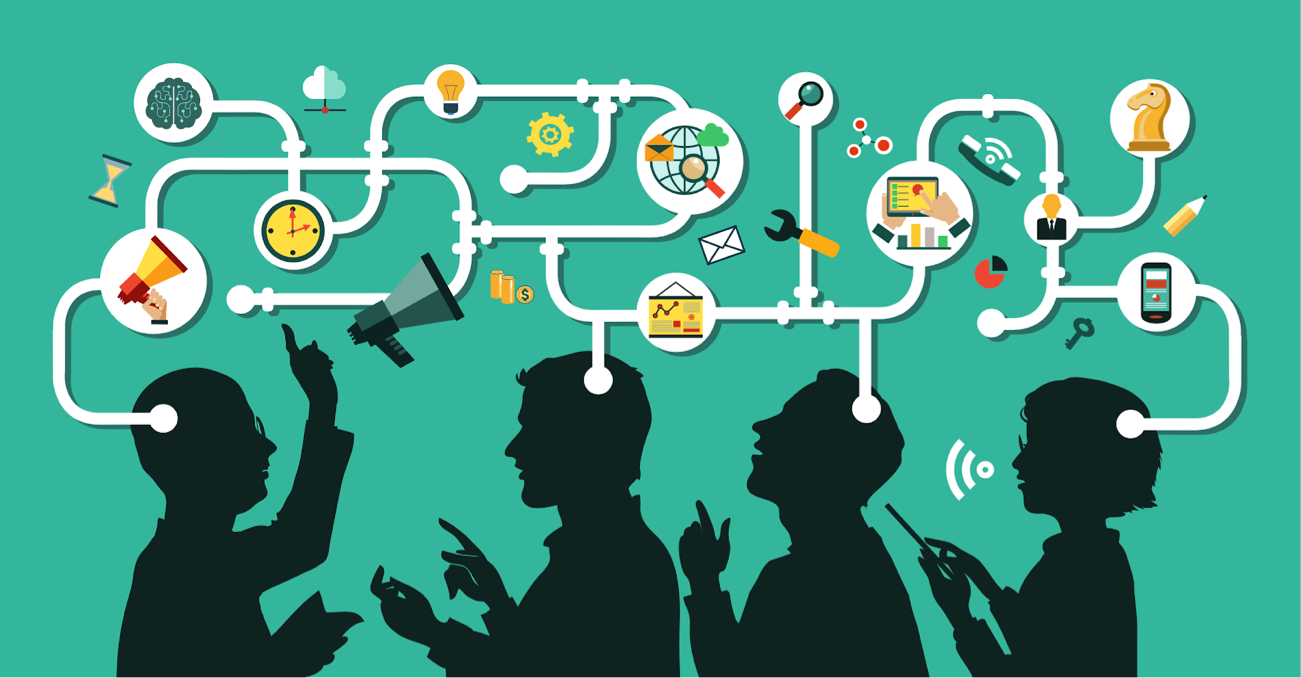How to use a Workflowy Template for Better One on One Meetings.
Not every business is the same and that’s why it’s essential that you get the right website for your business. Don’t make the same mistake that I made on my first business. I chose the wrong website platform. I couldn’t customize the website the way I required, I had to pay for expensive add-ons to provide the core functionality that I needed but changing to another website provider was too prohibitive. Once you have started on a website platform, it’s a big job to transition onto another platform.
Growth is a Wonderful Double-Edged Management Ninja Sword.
Growth is a Wonderful Double-Edged Management Ninja Sword. Because growth is good for both your employees and it’s good for you, the boss. But did you know that one of the unwritten responsibilities of a boss is that you have to ensure that your employees have the skills they need to do their job and are always working to improve? This is why employee development is one of the essential manager skills. But the problem is that school doesn’t teach you the skills you need to be Super Boss. And employee development gets left to HR.
PS: Are you responsible for Learning & Development in your organisation? Help to build a culture of learning in your organisation by sharing this article with your managers.
Related Material:
This article will show you why & how to use employee development as a management tool to increase results and retention. It contains information from the online program on the Academy: How to Develop Your Employees,
Be careful of one-size fits all management advice. Do what is right for you by finding out your Boss Superpower,
Why employee development is essential for employees:
Your employees are complicated animals. You can’t just give them a paycheck and a ping-pong table and expect them to be happy, productive employees. Creating a workplace where people want to work and are good at their jobs means fulfilling your employees need for growth.
Your employees have a desire to learn and grow,
Your employees like a challenge,
Your employees are motivated by doing things they are good at and
Developing skills helps your employees become self-actualised.
To put this another way, your top performers will get bored and leave if they are stagnant. Less experienced managers try to motivate employees with pay and bonuses. But successful managers know that quality employees choose growth over short term pay.
Why employee development is essential for managers:
I remember a time when you weren’t a proper business if you didn’t have a fax machine. But business is competitive with unrelenting progress. If you think your employees have all the skills they need, then you may as well be waiting by your fax machine for an update. And if you think employee development is a job for Human Resources alone and not managers, then you will soon watch your competitors overtake you. It’s your jab as a boss job to deliver, maintain and grow results. And one of the best ways you can do this is to develop the skills & capabilities of your employees. Because:
Increasing skills delivers results with increased speed and quality,
Increasing capabilities supports delegation so you can manage your own workload,
A constantly changing competitive & technological environment means your employees need to constantly develop their skills and
Learning promotes innovation & problem solving
Less experienced managers view skills development as a “nice to have”. They leave skills development to Human Resources for “when they have the time”. Successful bosses partner with Human Resources to take an active role in developing their employees’ skills. This is because they know that developing skills delivers results. Effective managers know that employee development is an effective tool to motivate and retain top talent.
But I don’t have the time for that.
I get it, employee development sounds time-consuming, where can managers find the time to develop employees? This is really the wrong question, because the true problem is that no-one ever taught you how to develop employees or any of the other essential manager skills. Because employee development can be as simple as a ten-minute conversation about the future. And you don’t even have to book extra meeting time because the best place to do this in your in your regular one on one meeting with your employee. (Not having one on one meetings with your employees – well of course you won’t have time to develop your employees!)
3 Actions you can take to develop your Employees:
Because I believe in actionable advice, here are easy 3 actions you can take to kick start your employee development right away:
Have a ten-minute development conversation with each of your employees. Tell them what skills you want them to develop. Collaborate to produce a training contract,
Delegate a growth assignment to your employees. This is something that will support their next career step or is a challenge that gives them a chance to use their skills. Helpful resource: The Ultimate Guide to Delegation,
Pick a skill you want your employees to learn/improve and assign a training course to them. Tip: Don’t forget the human touch, follow up the course assignment with a conversation explaining why, what your expectations are and what’s in it for them. Top tip: Looking for a good place to start? Choose something short/fun/informative/helpful. Here is a relevant course to assign: Have better meetings with your employees by assigning One on One Meetings with your Boss
Be the Boss your Employees Deserve
I just want to leave you with this final thought: Have you ever had a mentor (a boss, teacher, coach, etc.) that invested in you?
Someone who guided you through your career path,
Someone who knew what you were capable of and supported you to achieve your potential, and
Someone who pushed you to be better when you needed a little extra encouragement.
What difference did this make to your performance? How meaningful is this person to you? When you are a boss, you have an opportunity to make a difference to your employee’s lives. And this isn’t just because it gives you a warm fuzzy feeling but also because it makes fantastic business sense. This is the difference you can make when you invest in developing your employees.
About the Author:
Keith Tatley is a Chartered Accountant and Yoga Teacher. He helps people to have successful and happy careers by showing them the soft skills that people need to be effective in the workplace.
Headline skills that people need for better relationships between employees and their bosses include:
· How to have One on One Meetings with your Boss
· One on One Meetings with Employees
Keith operates the brands www.ManagerFoundation.com, Karm.Academy and WWW.BOSS.CAMP . Contact him at Keitht (at) ManagerFoundation.com for consulting on how to create better work environments.
Communication skills are how you get people to listen to what you say and do what you ask. This is why good communication is essential to your happiness and success.
But people are different and what works for one person doesn't work for the next.
Warning Signs that Your Communication is Ineffective:
People not listening to you
People not doing what you wanted
Misunderstandings and having to repeat yourself often
People having negative perceptions of you
Conflict
Tip: Find out How to Communicate More Effectively With Different Types of People. So that you can be more persuasive in your communication which will increase your success and happiness in life and business.
Have you ever said something to one person, and received a certain response, but said exactly the same thing to another person, and received a totally different response? What makes communication so challenging is that people are different. You said the same thing, but what each person "heard" was not the same! No wonder it’s so easy for simple communications to go badly wrong. But successful communication is vital to your success in life which is why you can’t afford to leave successful communications to chance.
Bulk communication is especially difficult because you’re communicating with all sorts of different people. What works for one person doesn’t work for everyone. If you don’t adapt your message, it will only work for a few people. Instead what I’m going to show you is how you can adapt your message so that it works better for different people.
We’re living in a world where people are increasingly distracted, the ability to communicate persuasively is becoming increasingly valuable. Instead of blaming others for not listening, when you learn how to:
Hold people's attention
Explain your message so that everyone understands and
Make your message motivational so that people do what you want
Don’t be the Angry Shouty Person
Now we all have experienced the angry - shouty person. This is the person who doesn’t know how to get their message across. What happens is that they get frustrated and the only way that they know how to make people listen to them is to use aggression, force and role power. These are the people that become the angry-shouty man. We’ve all been on the wrong side of the angry shouty man and we all know that it’s extremely unpleasant to experience this aggression.
But not only is this behaviour unpleasant, we also know that it doesn’t work. Because when we experience the angry shouty man our own flight or flight response is activated. This emotional reaction doesn’t solve problems, it just creates more problems.
But as much as we don’t like to admit it, we’ve also all been the angry shouty man ourselves. There are times when we get frustrated because people aren’t listening and it’s not nice to be there. Instead we need to wake up and find a better way and communicate better.
People are different - if you don’t adapt, your message will die
The reasons why communications fail more than they succeed is based on a simple fact about people. You know how some people are so impatient, they will barely give you 5 seconds of their attention while others move so slowly that it’s painful to get them to do anything. Some people will talk your ear off, while others would rather text message you even when they’re right next to you
What we are talking about here is what some people call personality models. The proper psychology term for this is behaviour models. It sounds a bit technical but this is simply about having a framework for something that we all know about already. We all already know that people are different. What this means is that different people respond differently to the same stimuli. What works for one person does not work for the next person. And more importantly, your way of doing things isn’t effective with everyone. That means that when you communicate your message will work well with some people but it won’t work with most people. If your message doesn’t work, then you won’t achieve the objectives you wanted.
Use a framework to make a message for everyone
Instead, when we adapt our message so that it works for the recipient then we will be an effective communicator. The concept for “How to Communicate with Everyone” is to ensure that your message has something for everyone in it and structure the message in the correct way.
To make sure that I have a message with something for everyone, I use the DISC behaviour model because it’s scientifically validated but is simple enough to use in everyday life and business. Don’t worry, you don’t have to be a psychologist to work with this because I will do all the heavy lifting for you.
Differences aren’t bad and you are the one who must adapt
Now when someone doesn’t understand the way you communicate, the temptation is to label their way as bad and to blame them for not being able to understand you. This doesn’t work because:
Different doesn’t automatically mean good or bad and
Blaming others doesn’t solve your problems
The reason why different isn’t automatically good or bad is because when it comes to someone’s behavior model there isn’t a wrong or a right way. For example someone can be more assertive or less assertive. Yes there are times when it’s better to be more assertive but there are also times when it’s better to be less assertive. Each behavior has got its pros and cons. The different behavior models are like mirror images of each other. For each strength there is a corresponding opposite weakness. That’s one reason I really like it because it’s like a Yin and a Yang perspective.
And blaming others doesn’t solve your problems because blame doesn’t make someone listen to you. Blame also means that the fault lies with the other person which makes you powerless to fix the problem. Instead of blame, recast the problem into a challenge: How can you be more persuasive? How can you communicate your view better so that they understand what you’re trying to say? It’s simple, if you want something from somebody, then the “currency” that you use it good communication.
Another way of saying this is that the reason people do what they do is because they see the world differently to you. And this is the route to a powerful corollary:
If you want someone to act the way you do then help them to see the world the same way that you see it.
How this Relates to You
The thing is that you also have a default behavior style.
This determines what other people think of you and
This determines how effective you are in your interactions with other people
A good way of thinking about this is that it’s similar to making friends. You know how some people you meet and you instantly just click with them. You’re on the same wavelength, maybe you even finish each other’s sentences. While with others there’s a lack of common understanding. Maybe it’s so bad that there’s an instant dislike.
Now your messages experience the same thing. Your messages will resonate with some people but not others. They may even repulse other people. The thing is that in life you can choose your friends but business forces you to communicate with difficult people.
There are 4 main DISC styles split into 4 different quadrants. Speaking to someone in a different DISC quadrant is like talking a different language. It’s not obvious because you’re both speaking English so you think you understand each other. But this it’s almost like some type of tragic comedy when a failure to communicate results in disaster.
This is why you must adapt your message for it to work with different people. If your message doesn’t have content for all behaviour types then it won’t work for all people. And it’s not just about the content, it’s also about the order.
The usual wisdom is “don’t try to make everyone happy” or in marketing this is known as, not trying to sell to everyone. Instead pick the audience that resonates and focus on just these people. But sometimes you don’t have the luxury of ignoring a lot of people. When you do bulk communications use this guidance to make sure that you have a message that will work for everybody.
The 4 main personality types are D for Dominance, I for Influence, S for Stability and C for Conscientious. When it comes to communicating with these people remember that they all will look for different things and you can use the following mnemonic to remember what to communicate:
D for Deliverables
I for Inspiration
S for Security and People and
C for Careful Calculations
Using this guidance simply results in a well constructed message because it answers all the questions that people ask.
Remember to answer the What, Who, How and Why questions as part of your communications. This will ensure you communications are motivational as well as complete.
Ineffective people blame others for their communication problems. Successful people take responsibility for making sure that their communications work, even if they have to change.
Remember, you can’t change other people, you can only change yourself. But when you change yourself, then you can change the world.
Next Steps
To be successful in life and business, it’s essential that you can communicate persuasively but people are different which means your message doesn’t work with everyone. Unsuccessful people blame others for not listening to their message, but successful people take responsibility for the success of their communication. And successful communication means adapting your message to the receiver.
When you talk to someone one on one it’s easier to monitor if your communication is working and change it when it isn’t.
How to Communicate With Everyone is a short on-line course that will show you:
What happens when you don’t adapt your communication
How to communicate more effectively with each of the main personality type
Comments:
Do you have any comments, questions or tips for communicating more effectively with different types of people? Please share in the comments below.






















